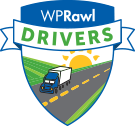Transportation Safety Training: City Driving
https://www.jjkeller.com/shop/Product/Transportation-Safety-Training-Advisor-Newsletter
CITY DRIVING
"City driving requires your undivided attention. Heavy traffic, narrow streets, and obstructed views are just some of the challenges you face when operating in the city.
You need to be alert to the challenges and potential dangers associated with city driving."
Defensive Driving Basics
"The importance of defensive driving is magnified when operating in an urban area. You must observe the entire situation, watch for changes, recognize potential hazards, stay on posted routes, be alert at all times, and continually scan a block or two ahead. Always watch for bicycles and pedestrians as well."
GPS Use
"When driving in an unfamiliar city, a global positioning system (GPS) can be of help in finding a destination.
All of the following information should be entered into the GPS prior to the driver beginning the trip. This includes vehicle length, width, & height, axle weights, and hazardous materials being transported.
Follow the route suggested by the GPS, but pay attention and obey traffic signs and advisories, especially if they provide restrictions and/ or directions the GPS did not alert you."
Turning
"Good judgment, proper speed control, and accurate steering are all important in executing safe turns.
When approaching an intersection, adjust the vehicle's speed. The sharper the turn, the slower the vehicle should be moving. When making a right turn, get about one-half of the rig past the corner before beginning the turn. Once the vehicle has reached that point, turn the steering wheel to the right and complete the turn. When executing a left turn, turn from as far right as possible to allow plenty of room for the tractor."
Intersections
"Crossing an intersection with a long vehicle can be a difficult maneuver. You must consider the vehicle's length and slower acceleration when making the decision to cross an intersection.
Always stop at uncontrolled or unmarked intersections. Assume you do not have the right away. The approach at controlled intersections is very similar. You should stop two times. First, at the stop sign or light, then again after easing forward to a point where you can clearly see oncoming traffic."
Crosswalks
"At a crosswalk, additional attention should be paid to what is happening to your right. Pedestrians and bicyclists are often hidden from your line of sight. Remember to also yield the right way for pedestrians when turning on green."
Roundabouts
"When approaching a roundabout, watch for signs to assist in selecting the appropriate lane and slow down. Yield to pedestrians and bicyclists as well as traffic on the left that is already in the roundabout.
When making a right turn, you may need more space so be alert for surrounding traffic and proceed with caution. When making a left turn, select the lane that allows you to keep traffic on your "sight side". As you approach your exit, turn on your right signal and select the correct lane with caution."
